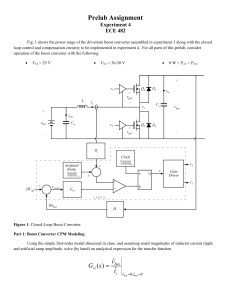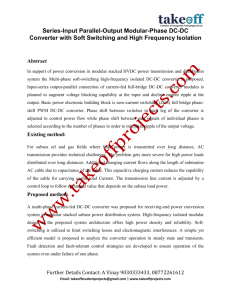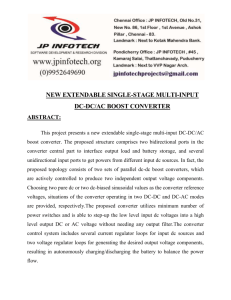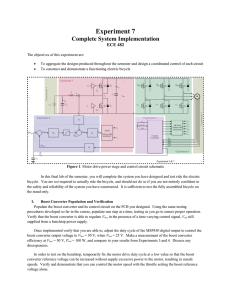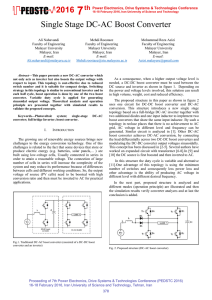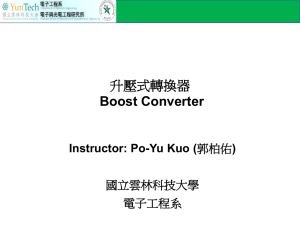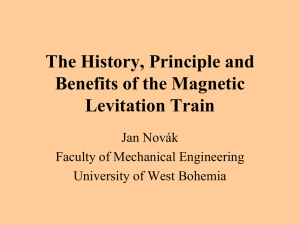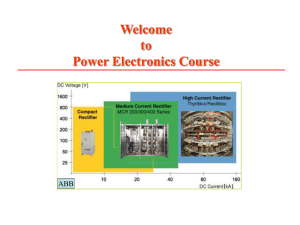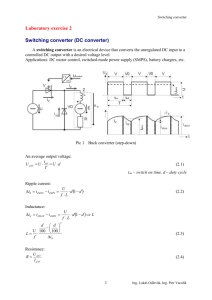Lesson 11
advertisement
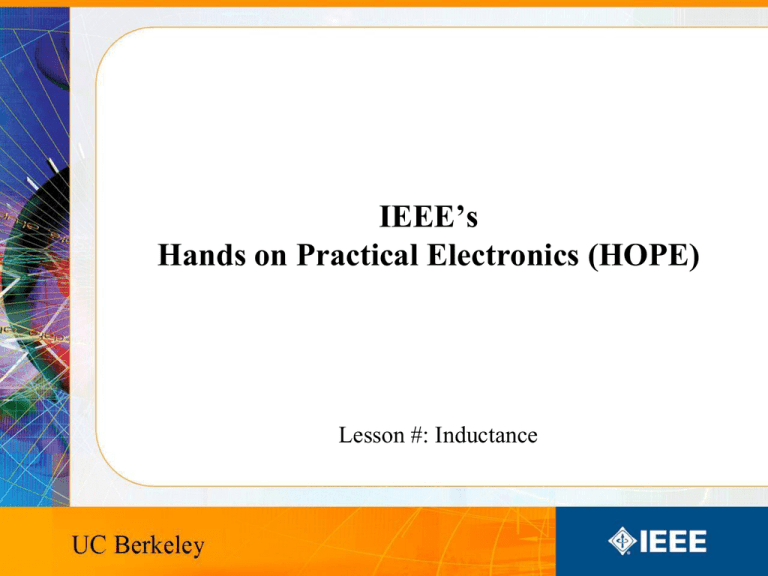
IEEE’s Hands on Practical Electronics (HOPE) Lesson #: Inductance This Week • • • • • Inductors Inductance Right hand rule Faraday’s Law Simple circuits Everyday Use • DC-DC Converter – Boost converter • Electromagnets – Motors – Generators • Transformers Other Uses • • • • Filters LNA Matching networks Impedance boosting (transmission lines) Inductor • Variable: L • Units: Henries (H) • Symbol: • Stores energy in the magnetic field CPU • Filter • Multiphase power supply converters AMD Socket 939 processor Inductance • How much something opposes a change in current • 1 Henry = 1 Weber/Ampere – Weber measures magnetic flux – Ampere measures current Analogy • Think of current as water. • It takes a while to get the wheel turning • But the wheel will continue to spin if the flow is stopped. Total Inductance • Analogous to total resistance • Parallel • Series Right Hand Rule • Current in direction of thumb • Magnetic field in direction of fingers Faraday’s Law of Induction • E is the electromotive force in volts • fb is the magnetic flux through the circuit in webers Faraday’s Law • In other words: – Change of magnetic field through a coil of wire induces a change in current DC-DC conterter • • • • • • You have 9V batteries How do you get a circuit to produce 18 volts? Put them in series? What if you only have one battery? Charge pumps (capacitors) Use inductors! Boost Converter • Step up converter Boost Converter Operation • Phase I – Charging • Phase II – Discharging Prius • Uses 500V • Without boost converter – 417 cells to power the motor • With boost converter – 168 cells to power the motor • A Prius actually uses only 168 cells and boosts the battery voltage from 202 V to 500 V. LEDs • AA batteries 1.5V • White LEDs need 3.3V • Use a boost converter Electromagnets • Magnetic field generated from current • No magnetic field if on current • More controllable than permanent magnets Electromagnets • Generate heat when in use • Strength limited by heat dissipation (before the magnet breaks) • Pulsing current can generate stronger fields Uses • • • • • • Motors/generators Relays (telephone line switching) Speakers/microphones (transducers) Hard disks Particle accelerators (SLAC, bevatron) Industrial lifting magnets Transformer • Steps up voltage while reducing current – Power lines • Relies on inductive coupling • NEEDS AC current! Lab Today’s Lab • • • • Make a simple transformer Wind the wire into coils around the same rod Measure the voltages to see voltage boosting Is the transformation ideal? – Calculate efficiency • Where is the power loss generated? Other Uses • Analog circuitry – Tuning old school radios References • Wikipedia!!! • Google

